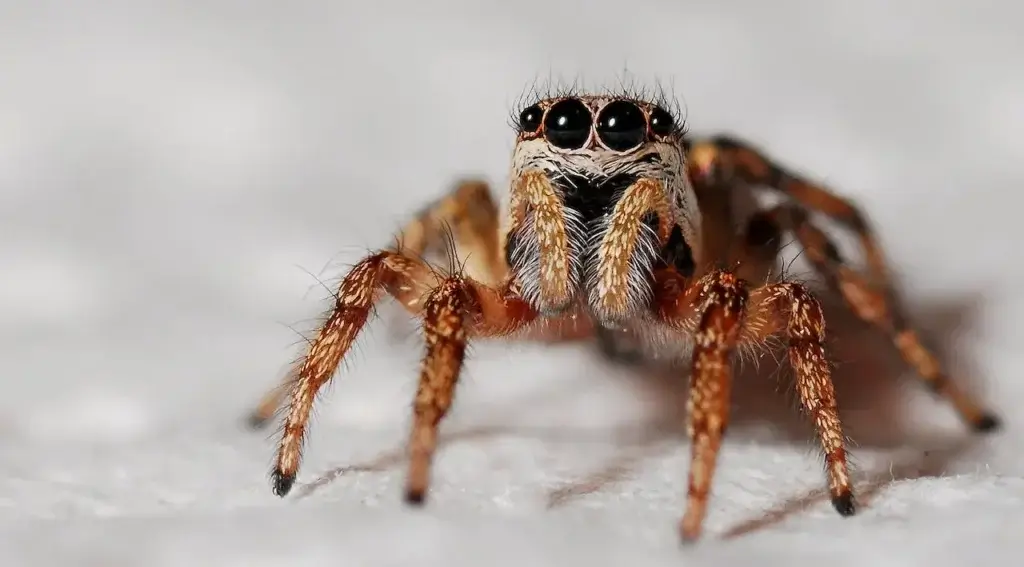Check out these bugs that have some extra bite! Learn about the deadliest pests in…

Do Spiders Hibernate?
Ever wondered, "Do spiders hibernate?" Though it may seem as if spiders—and other creepy crawlies—have no problem taking shelter in your house as the temperatures drop, the truth is that arachnids don’t typically turn to our homes when the months get cold.
To dispel this myth and shed some light on what spiders actually do to make it through the winter, A-1 Pest Control experts have created this guide to answer all of your questions. From, “Do spiders hibernate," to, “Where do they go”, we’ve got you covered.
And, if you are noticing an unsettling spike in insect sightings in your home no matter the season, we’ll also fill you in on how to get your first pest inspection from A-1 Pest Control free, so you can stay cozy without worry.

Table of Contents
Do Spiders Hibernate?
As the days grow shorter and temperatures drop, many creatures in the animal kingdom have developed strategies to survive the harsh conditions of winter. But what about spiders, those fascinating eight-legged arachnids that can be found in every corner of the world? Do spiders hibernate? The answer to this question may surprise you.
The truth is, that spiders don't technically “hibernate” in the way that animals like bears or groundhogs do. However, they have evolved a range of strategies to endure the winter months and maintain their populations.
What is Diapause?
Unlike mammals that enter a prolonged state of hibernation, spiders enter a state known as diapause. Diapause is a period of dormancy or suspended development that allows arachnids like spiders to endure harsh environmental conditions. In the context of winter, diapause helps spiders conserve energy, reduce metabolic activity, and avoid freezing temperatures. Here's how it works:
Reduced Activity
During the winter, spiders typically reduce their activity levels. The cold temperatures make it challenging for them to move and hunt for food. As a result, many species of spiders enter a state of dormancy, in which they become less active or appear almost motionless.
Seeking Shelter
To escape the harsh winter conditions, spiders often seek shelter in protected locations. This can include cracks in buildings, leaf litter, and tree bark—not necessarily homes or places occupied by people. These sheltered spots provide some insulation from the cold, wind, and precipitation, allowing the spiders to conserve energy.
Overwintering as Younglings
Some spider species lay their eggs in the fall, and the eggs overwinter in a protective sac. The spiderlings, or baby spiders, will hatch in the spring when conditions are more favorable for their survival. By hatching in the spring, the spiderlings can take advantage of the increased availability of prey.
Web Maintenance
Orb-weaver spiders, known for their intricate webs, often maintain their webs throughout the winter. These webs can capture prey that becomes active on milder winter days, providing the spider with essential sustenance during the colder months.
Web Deconstruction
Conversely, some spiders dismantle their webs and go into hiding. This is an energy-saving measure, as web construction and maintenance can be a resource-intensive process.
Freeze Tolerance
Some spider species have developed a degree of freeze tolerance, enabling them to survive exposure to sub-freezing temperatures. This adaptation prevents the formation of ice crystals within their bodies, a condition that can affect cold-blooded creatures when temperatures drop, which could be lethal.
While they may not be entirely immune to the cold, these spiders can withstand brief periods of freezing weather.
Mating and Reproduction
Spiders typically avoid mating and reproduction during the winter months. The focus shifts to survival and conserving resources. Mating and egg-laying tend to occur in the warmer months, ensuring that the offspring have a better chance of survival.
It's important to note that the specific strategies employed by spiders can vary based on the species and the environmental conditions they face. For instance, spiders in temperate regions adapt differently to those in colder climates or those found in tropical areas with less pronounced temperature fluctuations.
Which Spiders Diapause?
Not all spiders enter diapause during the winter. The decision to go into diapause varies based on the species and their environmental conditions. Many orb-weaving spiders, for example, are known to go into diapause. These include species like the garden orb-weaver and the common orb-weaver. Check out some of the most poisonous spiders in North Carolina.
However, other spider families may exhibit different strategies, such as building winter nests or laying their eggs in protective silken sacs.
Do Spiders Hibernate: Diapause vs. Hibernation
The difference between hibernation and diapause can be tricky, as both involve a state of dormancy over a period of colder months. However, they differ in several key ways that are important to keep in mind to really understand the patterns and behaviors of spiders in and around your home.
Purpose
Hibernation in mammals primarily serves to conserve energy during the winter when food is scarce, and temperatures are harsh. Diapause in spiders, on the other hand, may not be solely related to energy conservation but can involve suspended development, protection of eggs or young, and avoidance of extreme cold.
Duration
Hibernation in mammals often lasts for an extended period, whereas diapause in spiders can be more flexible, varying based on the species and environmental conditions.
Activity Level
Hibernating mammals enter a state of torpor, where their metabolic processes slow down dramatically. In contrast, diapausing spiders can still be somewhat active and may respond to brief periods of warming by becoming more active.
Final Word: Do Spiders Hibernate?
As we’ve seen, the answer to the question, “Do spiders hibernate,” is not as straightforward as it at first seems. While spiders do not hibernate in the traditional sense, they do enter a state of diapause during the winter. Understanding the subtle differences between hibernation and diapause is just one window into the remarkable adaptability of spiders and their ability to thrive in a world of changing seasons.
If you’ve noticed increased numbers of spiders in your North Carolina home, or more activity no matter the season, give us a call at A-1 Pest Control today. For decades, we’ve been keeping our homes in North Carolina pest- and spider-free. For more information on our individualized pest control plans, give us a call today at 828-481-9140 or schedule your initial pest inspection online at no cost!
Related Posts
- 5 Deadliest Pests in North Carolina
- Poisonous Spiders of North Carolina
Learn about the poisonous spiders that we have here in North Carolina - and what…
- Common House Spiders in North Carolina Homes
Not too many people like spiders, they are creepy and most people will run screaming if…
